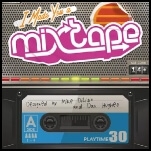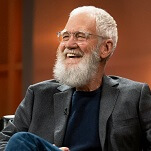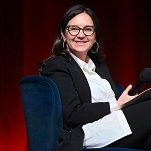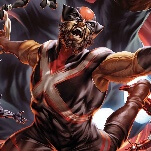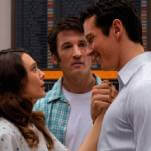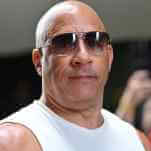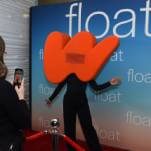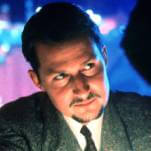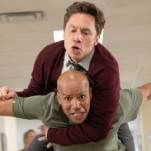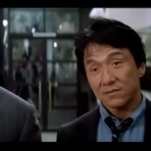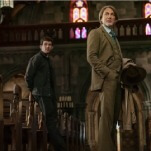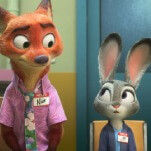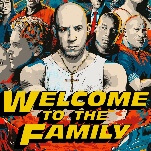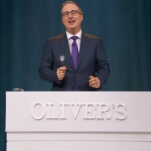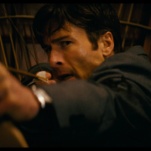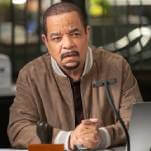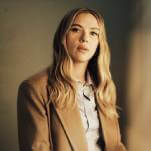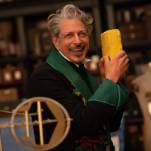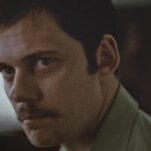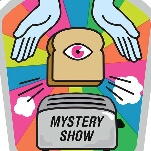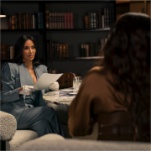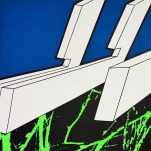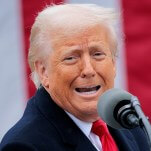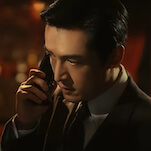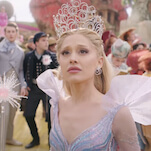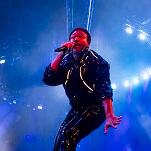The Devil Wears Prada pulls off the perfect romantic comedy look, even though it really isn't one
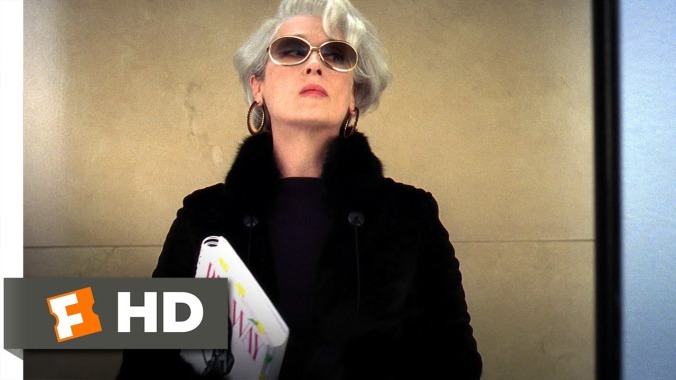
One of the things you quickly learn when you write an ongoing column about romantic comedies is that it can be kind of hard to decide what constitutes a rom-com. As soon as you move beyond clear-cut picks like When Harry Met Sally, things start to get a bit more complicated. Sleepless In Seattle and My Best Friend’s Wedding are both considered classic rom-coms even though they drastically break the traditional rom-com formula. Bridget Jones’s Diary straddles the line between being a rom-com and a female-led comedy. And then there are true female-led comedies like Miss Congeniality, Legally Blonde, and The Princess Diaries, which are sometimes lumped into the rom-com category, even though romance isn’t really their primary focus. It’s the old “I know it when I see it” adage, and it has to do with the way big studio romantic comedies look and feel. So anything that loosely fits that vibe (and features a female lead) is thrown into the rom-com genre—a genre that, more so than most, is automatically assumed to be of lesser quality and intelligence. That’s why those films, even the well-liked ones, are still often dismissively referred to as “guilty pleasures” or “chick flicks.”
No film better embodies this rom-com conundrum than 2006’s The Devil Wears Prada, a nuanced workplace comedy that’s frequently cited as a romantic comedy because it looks and feels like one. The film takes place in a glamorous version of New York City, it has a pop-filled soundtrack and a bright, colorful visual palette, and it features not only a big makeover sequence but also three separate fashion montages. (Costume designer Patricia Field stretched a $100,000 budget into $1 million of designer clothes by calling in every favor she had in the industry, and earned a well-deserved Oscar nomination—a rarity for a contemporary-set film.) Thanks to movies like How To Lose A Guy In 10 Days and 13 Going On 30, audiences were used to seeing glossy fashion magazines, scary bosses, and workplace besties as backdrops for movies focused first and foremost on romance. In using those trappings to tell a different kind of story, however, The Devil Wears Prada makes the argument that the aesthetics of the rom-com genre have value as an intentional cinematic style. So while it might not be a romantic comedy, The Devil Wears Prada still winds up serving as a great defense of the genre’s style and tone.
The film uses rom-com storytelling tropes to a slightly more subversive end. Previous attempts to adapt Lauren Weisberger’s 2003 bestseller (inspired by the author’s brief time working as an assistant for Vogue editor-in-chief Anna Wintour) tried to make it more of a heightened Zoolander–esque satire. Director David Frankel and screenwriter Aline Brosh McKenna pushed the film in a different direction, making it a funny but also emotionally honest portrait of two women in two very different stages of life: Andy Sachs (Anne Hathaway) is just starting her career as an assistant at Runway magazine, while Miranda Priestly (Meryl Streep) is at the peak of hers as its longtime editor-in-chief.
As McKenna told IndieWire, “It’s rare to get the opportunity to write a big Hollywood movie with women protagonists in a professional setting, where the love story is not the thrust of it. … It was very liberating, after the romance I had been working on. I felt I was allowed to do what the movie wanted to be, a Faust story, a Wall Street for ladies, and not worry about giving her a romantic happy ending.” For Andy’s storyline, McKenna taps into a period of life that’s sometimes underexplored by movies: the transition from college to the workforce. As a recent graduate of Northwestern University’s journalism school, Andy starts the movie with the mindset of a star student. She’s eager to please and be praised, and fairly naïve about the way the business world actually works. The detailed depiction of Andy’s early job struggles (anyone who’s ever worked an office job can relate to the anxiety of answering your first phone call) help ground the film’s more stylized exploration of the fashion industry. And though there are details of Andy’s arc that don’t entirely work, it’s satisfying to watch her grow into a person who’s more confident about what she wants.
Streep played a big role in shaping the tone of the film, too, and getting her attached to the project was a big casting coup, one that only happened after she re-negotiated Fox’s initial low-balled salary offer. (As the actor told Variety, “I was 55, and I had just learned, at a very late date, how to deal on my own behalf.”) In addition to crafting Miranda’s look and voice (she wanted to avoid mimicking Wintour and instead modeled Miranda’s terrifying hushed tone on Clint Eastwood), Streep also pushed for even more emotional realism. She requested a moment in which Miranda appeared “unpeeled,” without the armor of her clothes and makeup, which comes when she briefly opens up to Andy about her impending divorce. She also pushed McKenna to expand a few lines of dialogue into the film’s now iconic “cerulean sweater” speech, which doubles as a meta defense of any pursuit that society dismisses solely because it’s feminine.
In fact, the first half of the film offers such a great defense of the fashion industry that it almost unbalances the whole thing. The Devil Wears Prada is ostensibly about Andy realizing that the toxicity of the fashion world is corrupting her, or at the very least taking her away from her goal of becoming a serious journalist. But the film never quite sells that idea because it has such a clear love for fashion and because Andy seems to remain so principled throughout. That also contributes to the weakest aspect of the movie: Andy’s relationship with her boyfriend, Nate (Adrian Grenier). There’s been a recent wave of “Nate is the worst boyfriend” takes, which are fair enough even if they’re slightly misdiagnosing the problem. Like the small subplots about Andy’s friends and her dad (both of which are also weak), Nate is meant to serve as a marker of just how far Andy has drifted away from who she used to be. But because Andy never actually seems to change for the worse, Nate’s complaints mostly come across as him whining about her missing his birthday party.

